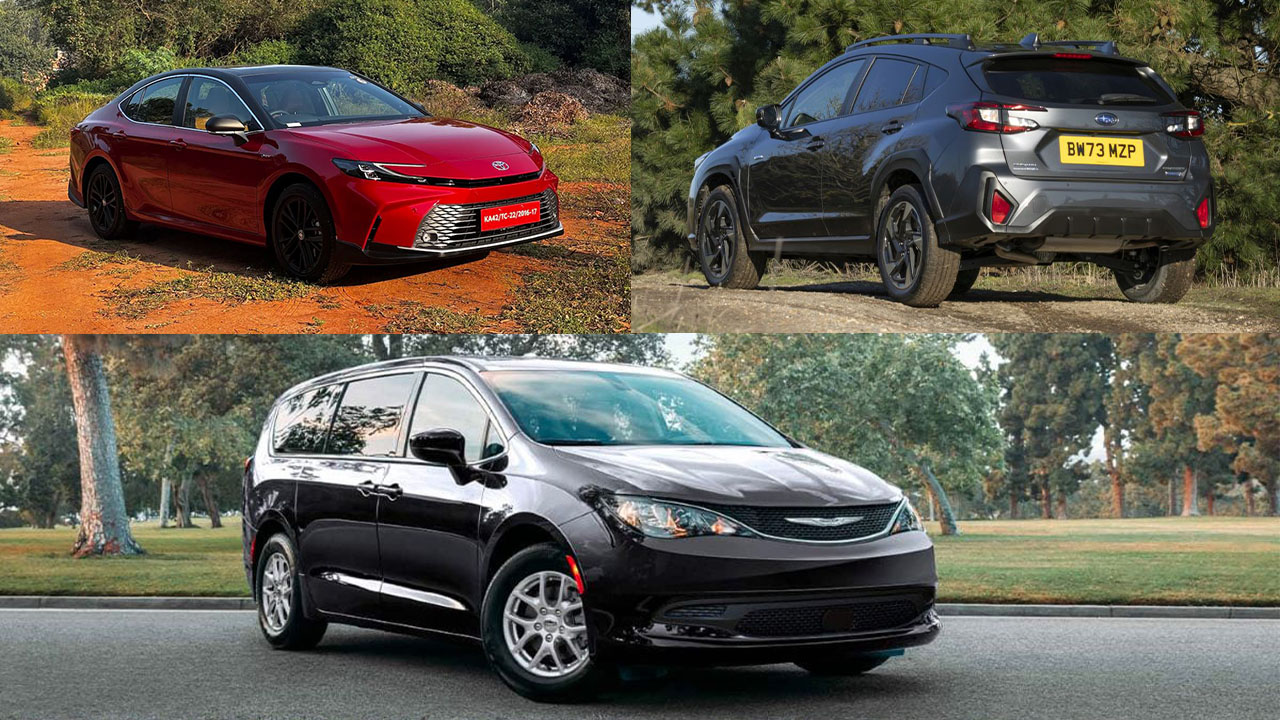In January, the average price of a new car in the United States was $48,641, which represents a 1.3% increase from the previous year.
However, the latest list of the top cars, trucks, and SUVs highlights several 2025 model-year vehicles that are more budget-friendly, with the most affordable options starting at a suggested retail price of $21,590.
“You don’t have to spend that much to get a car that’s going to be safe and reliable and enjoyable to own,” said Alex Knizek, associate director of auto test development for Consumer Reports, a well-known research, testing, and advocacy organization.
Knizek explained that hybrids perform well in testing due to their reliability, fuel efficiency, quiet interiors, and strong acceleration. While these vehicles can be more expensive than their gasoline-powered counterparts, he noted that the price difference has decreased over the years.
Each vehicle is anonymously purchased at dealerships, and over 50 tests are conducted following a 2,000-mile break-in period. Additionally, reliability and satisfaction surveys from members are incorporated into the analysis.
5 Cars That Buyers Still Want
Nissan Sentra
The Nissan Sentra provides a relatively spacious interior, responsive handling, strong fuel efficiency, and more standard active safety features compared to some higher-priced competitors.
The 2025 Nissan Sentra continues to prove that buyers looking for an affordable compact car don’t have to settle for a bare-bones experience. With a stylish, sporty exterior, a smooth and comfortable ride over bumps, and a generously sized trunk, the Sentra offers a solid package at a lower price than many of its competitors.
While the Sentra isn’t going to win any races with its slow acceleration and average emergency braking performance, it shines when it comes to its comfortable ride, appealing interior materials, and an impressive suite of standard advanced driver assistance features.
The infotainment system graphics feel a bit dated, but the overall value the Sentra brings to the table makes it one of the stronger choices in its class.
For 2025, there are no major changes to the Sentra. It remains part of the eighth-generation lineup that was introduced in 2020.
Cost-to-drive estimates for the 2025 Nissan Sentra S 4dr Sedan (2.0L 4cyl CVT) are based on driving 15,000 miles per year, with a mix of 55% city and 45% highway, and an energy estimate of $3.13 per gallon for regular unleaded gas in North Dakota.
Based on these figures, drivers can expect a monthly fuel cost of around $113 for the Sentra S, compared to an average of $160 per month for a typical midsize car.
Following some small updates last year, the Sentra’s biggest 2025 change is a shift toward better connectivity. The SV trim now offers an optional package that includes a Wi-Fi hotspot and access to Nissan’s remote smartphone app-based services.
Got to your seat at the game and think you may have left the doors unlocked? NissanConnect lets you remotely lock or unlock them. Leaving the game and want to preheat or precool the cabin? You can do that too.
And if you need to keep younger passengers entertained on a long road trip, the Wi-Fi hotspot makes streaming games and videos easy.

In today’s market, where small SUVs are becoming more dominant and compact sedans are thinning out, the Sentra stands out as a legitimate alternative.
Key competitors include the Honda Civic, a longtime class leader known for its reliability and variety of options, including hybrid and high-performance models.
The Civic demands a higher price but remains extremely popular. The Hyundai Elantra is another strong player, offering a broad lineup, an excellent warranty, and very competitive pricing.
Meanwhile, the new Kia K5 steps in as a fresh alternative, aiming to bridge the gap between the Sentra and Civic by offering a mix of exciting features and strong performance at a mid-range price point.
Starting MSRP: $21,590-$25,285, depending on the trim.
Subaru Crosstrek
Consumer Reports noted that the Subaru Crosstrek offers good fuel efficiency, high ground clearance, and standard all-wheel drive, making it well-suited for both city driving and outdoor adventures.
The report also highlighted the SUV’s easy-to-use controls and comfortable seating in both the front and rear. While the base trim is equipped with a less powerful 152-hp engine, all other trims feature a more energetic 182-hp, 2.5-liter four-cylinder engine.
Many SUVs give off the impression that they’re capable off-road, but the reality is that a lot of them would struggle just to escape a muddy parking lot.
The reason? Most are either front-wheel drive or have part-time four-wheel-drive systems that don’t deliver power consistently. The Subaru Crosstrek stands apart as a very different beast.
If it seems familiar, that’s because this family SUV replaces the Subaru XV and sticks to the same formula of prioritizing substance over flashy design.
So, even though the Crosstrek’s exterior styling is relatively understated, it comes packed with plenty of standard equipment and features a hybrid engine that, in theory, should deliver excellent efficiency.
While that package sounds promising, it’s worth noting that the XV didn’t quite hit the mark, getting overshadowed by rivals like the Kia Sportage, Nissan Qashqai, Seat Ateca, and Skoda Karoq. The big question now is: has Subaru managed to get it right this time?
That’s exactly what we’ll explore in this review, as we pit the Subaru Crosstrek against the top family SUVs, judging it for performance, comfort, practicality, and running costs.

The Subaru Crosstrek excels off-road and comes generously equipped – particularly with safety features.
However, if your driving is going to stay firmly on paved roads, you’re likely to be better served by one of its more conventional family SUV competitors, which tend to be cheaper to buy, offer better practicality, and are more affordable to run. If you’re considering a Crosstrek, the entry-level Limited trim is our top recommendation.
You get a high driving position, lots of standard safety equipment, and great all-weather ability. However, it’s worth noting that the engine isn’t particularly efficient, the car is expensive to buy, and it isn’t the most practical option out there.
New car deals for the Subaru Crosstrek start from £33,995, with estimated finance options from around £412 per month. Leasing deals are available from £451 per month.
When it comes to performance and drive, the Crosstrek has its strong points and some notable weaknesses. On the positive side, it offers genuine all-weather and all-terrain ability and is genuinely good to drive.
On the downside, the ride can feel busy, and many rivals feel quicker at low revs. All Subaru Crosstrek models are powered by a 134bhp 2.0-litre petrol mild-hybrid engine, providing adequate performance for everyday use.
However, it never feels particularly lively, with official performance figures indicating 0-62mph in 10.8 seconds – slower than entry-level versions of the Kia Sportage or Nissan Qashqai. This lack of urgency is especially noticeable at lower speeds, where turbocharged rivals respond more eagerly.
In the world of hybrids, the Crosstrek’s system is especially mild; you might catch a few seconds of electric-only movement at very low speeds when lifting off the accelerator.
When the petrol engine kicks back in, the transition isn’t nearly as seamless as it is in the best hybrids. The experience isn’t improved by the Crosstrek’s CVT automatic gearbox either.
While it has “simulated gears” that you can toggle using steering wheel paddle shifters, it’s generally best left in full automatic mode, where it usually keeps the drive reasonably smooth.
As is often the case with CVTs, the engine revs loudly and holds high revs under hard acceleration. Around town, when you’re frequently on and off the accelerator, the gearbox can sometimes feel a bit jerky.
Through the corners, the Crosstrek handles body roll well and maintains a good level of agility. There’s ample grip and a constant feeling of security, and the steering offers a satisfying, well-weighted feel.
Thanks to this, it’s a more enjoyable drive than the Nissan Qashqai, although it still falls short of the Seat Ateca’s sharpness. Yet, as with the Ateca, this keen handling comes at a price.
The Crosstrek’s ride is on the firm side and never quite smooths out completely, even on seemingly good surfaces, leaving you bouncing around when encountering rough patches of road.
Where the Crosstrek really sets itself apart from the mainstream pack of family SUVs is in its authentic off-road prowess.
Thanks to its impressive 220mm of ground clearance and a specialized driving mode called X-Mode – which fine-tunes the all-wheel-drive system for low-speed tricky conditions and includes hill descent control – the Crosstrek can comfortably tackle challenging terrain, even when equipped with regular road tyres.
Starting MSRP: $25,810-$32,610, depending on the trim.
Subaru Forester
According to the report, the 2025 Subaru Forester is a practical option, especially following its redesign for the 2025 model year, which provides a quieter cabin and additional cargo space compared to the previous version.
Consumer Reports pointed out that the SUV’s excellent visibility, fuel efficiency, and standard all-wheel drive have contributed to its placement on the Top Picks list for 12 consecutive years.
The Forester steps into 2025 with a refreshed exterior design and a lightly updated chassis. It continues to offer standard all-wheel drive, and its powertrain remains almost identical to that of the outgoing model—though for 2025, a Forester hybrid, reviewed separately, also joins the lineup.
A new electric power-steering rack has been introduced, which Subaru claims shares components with the spirited WRX performance sedan, and a foot-activated hands-free power tailgate has been added to the options list. The new Forester is scheduled to go on sale in spring 2024.
The price of the 2025 Subaru Forester starts at $31,415 and rises to $41,715 depending on trim and options. The Base model is priced at $31,415, the Premium at $33,730, the Sport—which is the recommended model—at $36,230, the Wilderness at $36,415, the Limited at $37,830, and the Touring tops out the lineup at $41,715.
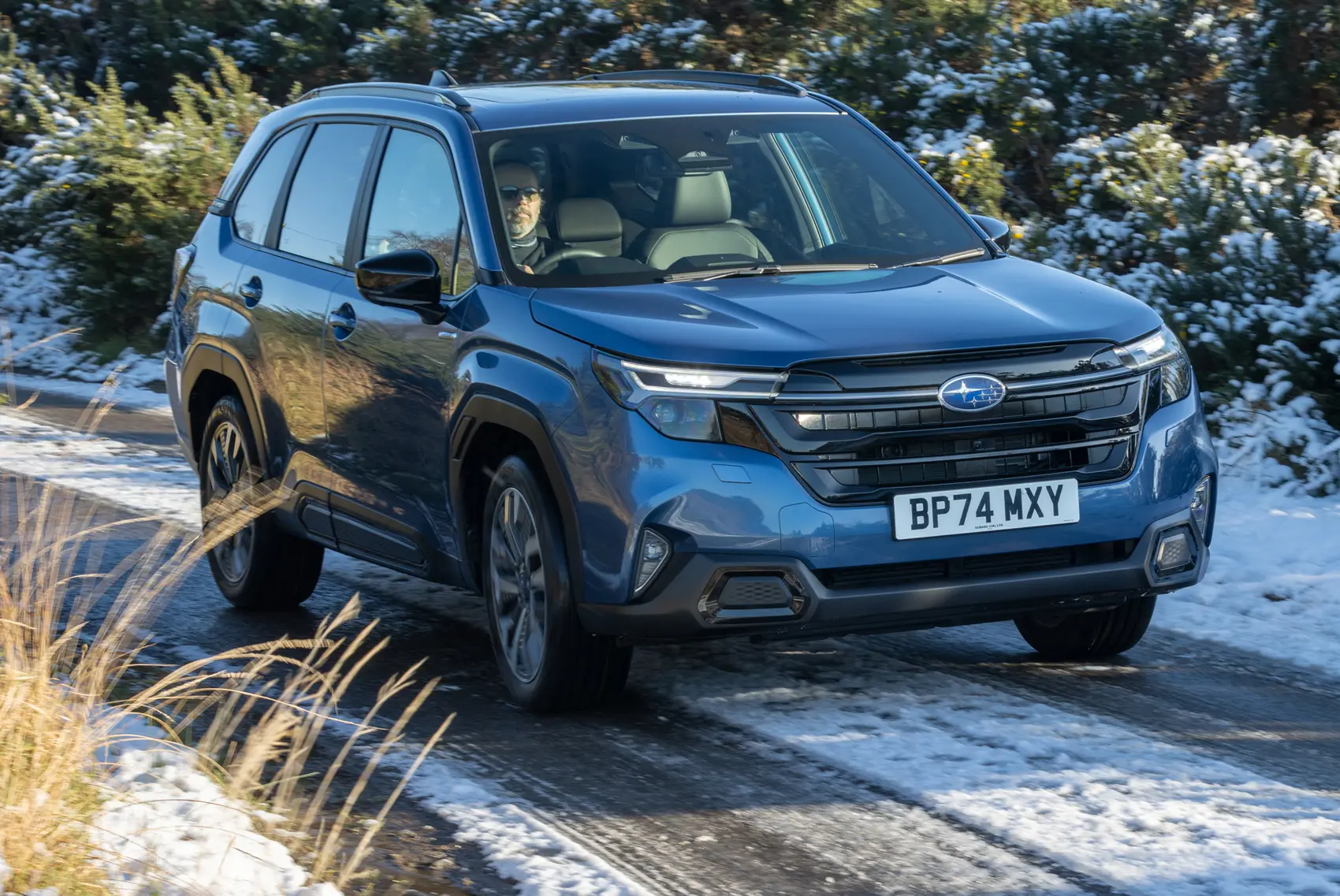
The Forester offers a strong list of standard features, including remote keyless entry, LED headlights, and “welcome lighting,” which casts a beam of light on the exterior front door handles at night. We recommend the Sport trim level because it strikes a great balance of equipment, appearance, and price within the Forester range.
The Forester Sport adds stylish bronze trim and exclusive wheels, and enhances comfort with features like heated front seats and a generously sized 11.6-inch infotainment touchscreen.
Interestingly, Subaru notes that the 2024 Forester Wilderness will continue to be sold alongside the new 2025 Forester models until an unspecified future date; we anticipate the Wilderness trim will transition to the new generation for 2026. The price for the 2024 Forester Wilderness remains steady at $36,265.
Starting MSRP: $29,995-$40,295, depending on the trim.
Toyota Camry
The 2025 Toyota Camry has been redesigned and is described as “comfortable, practical, and user-friendly,” according to the report. Consumer Reports notes that the sedan, now available exclusively as a hybrid, provides a smooth ride along with precise handling.
Starting MSRP: $28,700-$34,900, depending on the trim.
When we think of the Toyota Supra—and to be clear, we aren’t talking about the current BMW-based GR Supra—the typical image that comes to mind is the fourth-generation A80 model.
This is the Supra many of us grew up admiring, featuring the legendary 2JZ straight-six engine, produced between 1993 and 1998 in the United States, and continuing until 2002 in global markets. What we certainly don’t think of when picturing the Supra is the Toyota Camry; and honestly, why would we?
The Camry has long been Toyota’s unassuming, best-selling sedan, a staple of reliability and practicality for several decades now. It has never been, by any stretch of the imagination, a sports car.
Toyota, the Japanese automaker founded in 1937, has built a reputation for reliability across nearly every automotive segment, spanning from sports cars and family sedans to rugged pickup trucks and capable off-roaders.

Some of its most iconic models include the Hilux, Land Cruiser, Camry, Crown, and Corolla—the latter holding the title of the world’s best-selling vehicle nameplate, with more than 50 million Corolla-badged vehicles sold since its introduction.
Toyota primarily operates in the mainstream market but is also well known for launching Lexus, its luxury sub-brand designed to compete with the likes of Mercedes-Benz.
The company was founded on August 28, 1937, by Kiichiro Toyoda, is headquartered in Aichi, Japan, is publicly traded, and currently led by CEO Koji Sato.
However, back when the Camry was first launched at the very end of the 1970s, the dynamic between the Supra and the Camry was quite different.
The first-generation Toyota Supra had debuted just a year earlier, in 1978. At that point, the Supra had not yet earned its now-infamous reputation and would not for quite some time.
Meanwhile, the Camry—then known as the “Celica Camry”—was still a rear-wheel-drive sedan just starting out. It even shared some of its components with the newly launched Supra. In simple terms, the Camry was the new kid on the block, and the Supra took on the role of its mentor.
Ford Maverick/Maverick Hybrid
Consumer Reports highlights that the Ford Maverick earned a spot on this year’s list due to its affordability, interior features, and ease of maneuverability.
The truck provides reasonable passenger space, and while the 250-hp turbocharged four-cylinder engine in the base model is lively, the 191-hp hybrid version is “the real draw” after achieving 37 mpg in Consumer Reports’ tests.
Ford has long been a pickup-truck specialist, and its smallest model, the 2025 Maverick, blends the best features of the mid-size Ranger and the full-size F-150.
A hybrid setup comes standard and helps save money at the pump, while a turbocharged four-cylinder engine is available as an option for those who want zippy acceleration.
The difference in tow capability and payload capacity between the two powertrains is minimal, which makes choosing between them even easier.
All-wheel drive is offered with either engine, and when paired with the optional Towing package, both versions of the Maverick can tow up to 4000 pounds.

Although the Maverick’s short cargo bed isn’t as suited for hauling bulky cargo as its larger counterparts, it still offers enough space for a yard of mulch, several bikes, or a stack of moving boxes—you know, truck stuff.
Inside, the Maverick provides room for four adults, and, provided you don’t skimp and settle for the base XL trim, there are enough creature comforts to keep everyone satisfied. That said, the second row is a bit tight on legroom.
The only other compact pickup truck currently on the market is the Hyundai Santa Cruz, which does offer a more upscale interior. However, it comes at a higher price and isn’t available with a hybrid powertrain.
Worst-Selling Cars
After years of disruption caused by the pandemic and supply chain challenges, 2024 served as something of a reset year for car manufacturers.
The pent-up demand from previous years had mostly diminished, and higher interest rates led to more cautious spending by buyers.
The shift toward electric vehicles (EVs) continued, though several automakers revealed plans to slow their transition to fully electric models in favor of developing hybrids, which saw a boost in sales during the year.
As 2025 began and the final sales figures for 2024 were confirmed, analysts at CarEdge released a new report detailing the slowest-selling cars based on dealer inventory.
The report compared the total number of units available for sale with the number of units sold over the 45 days leading up to January 2, 2025, resulting in a “day supply” for each model.
This figure indicates how many days it would take to clear the current inventory backlog at dealerships across the country, assuming no new deliveries. According to the report, these ten models are the worst offenders on the market.
Jaguar XF
While the F-Pace has proven difficult to move, dealers with an oversupply of the Jaguar XF may face an even greater challenge in persuading buyers to make a purchase.
By mid-2024, the final XF had already left the production line, and despite having gone over six months without any new deliveries, dealerships are still left with a 280-day supply.

In recent years, buyers have shown a clear preference for SUVs over sedans, and the Jaguar XF isn’t exactly a standout in its segment. In fact, much like the F-Pace, it’s safe to assume that a significant number of potential buyers have likely forgotten that the XF even exists.
Furthermore, just like the F-Pace, the XF has not seen any major updates since a significant interior redesign for the 2021 model year.
How quickly Jaguar dealerships can move their existing stock in preparation for the new generation of models remains uncertain, but it will likely be a difficult task to clear the inventory.
The Jaguar XF also received a range of new engines, featuring four variants of JLR’s 2.0-litre, four-cylinder Ingenium diesel engines, which was later supplemented by a trio of Ingenium petrol options introduced two years after the model’s 2017 launch.
The top of the range was dominated by 3.0-litre V6 petrol and diesel engines, which were mainly found in the XF S.
In later models, starting from 2019 onwards, Jaguar trimmed the lineup, offering only 2.0-litre engines. These included the 2.0 247bhp P250 and 296bhp P300 petrol-engined cars, along with the 201bhp D200 diesel model.
The most recent upgrade in 2020 brought a heavily revised interior developed in conjunction with the F-Pace SUV, the introduction of an 11.4in touchscreen infotainment system, a mild-hybrid diesel engine, and a rationalisation of the trim line-up.
Luxury cars like the XF are expected to be smooth and relaxing to drive, and in this area, the XF certainly performs well.
Even when equipped with the optional larger wheels, it remains suitably wafty, though you can occasionally feel ripples from road surfaces lightly making their way through to your backside.
Models fitted with 19in wheels or smaller seem to alleviate even this minor complaint, offering a level of comfort entirely appropriate for a car in this class. Fortunately, this impressive comfort does not come at the expense of handling.
For a car of its size, the XF’s agility through corners is remarkable; the nose immediately swings into turns as soon as you move the wheel, while the compliant suspension smooths out mid-corner bumps and allows the XF to glide from bend to bend with fluid control.
The car remains beautifully balanced and responds sweetly to both throttle and steering inputs, resulting in a driving experience that is thoroughly enjoyable, whether you’re navigating a twisting back road, cruising along a fast, sweeping A-road, or covering long distances on a motorway. Inside, the XF could easily be just as impressive, were it not for a few drawbacks.
The infotainment system presents some labyrinthine menus and doesn’t react as promptly as it should, while certain elements of the build quality — such as some switchgear and a few plastics — feel a bit cheaper than what’s found in equivalent rivals.
Nevertheless, elegant touches like the knurled gear selector and the sweeping arc of wood veneer across the dashboard help distract from these shortcomings.
As for space, it is ample for all occupants; while some competitors may offer slightly more, it’s fair to question whether that extra room would be necessary.
Alfa Romeo Giulia
The automaking giant Stellantis faced a challenging 2024. While it had achieved record profits in 2023 through a focus on short-term gains, the car market corrected itself after the post-pandemic supply shortages, leading buyers to turn away from its brands.
CEO Carlos Tavares stepped down in December 2024, but by then, Stellantis had seen unprecedented levels of inventory accumulate in the U.S. One particularly troublesome model for the brand is the Alfa Romeo Giulia, which debuted in 2017.
The Italian sports sedan was never expected to become a major sales success, but Stellantis clearly believed it could sell many more units than it ultimately has.
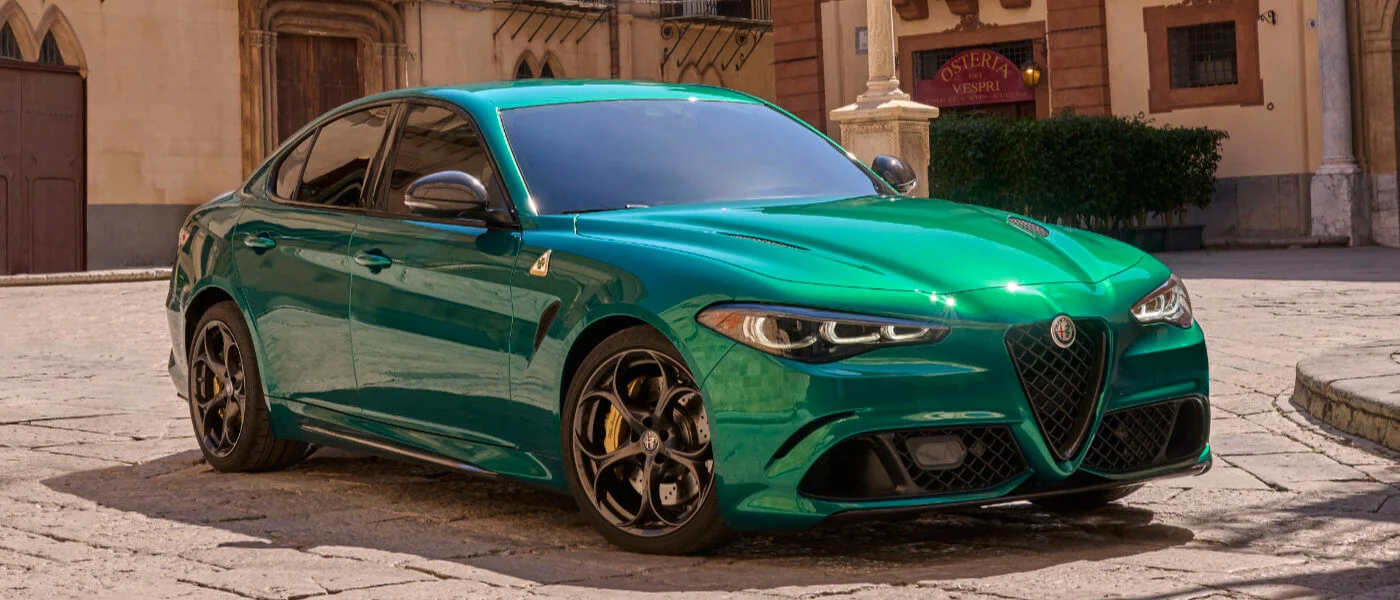
While part of the slow sales can be attributed to the general decline in popularity of sedans, this is hardly a new trend. In fact, most major automakers have been cutting back or eliminating their sedan offerings for several years, reflecting the shrinking pool of sedan buyers.
It’s clear that other factors contribute to the 285-day supply backlog for this model. The Giulia has faced reliability issues since its launch, though this has been an ongoing concern.
Perhaps its competition, which continually evolves, has simply proven too appealing for potential buyers. Whatever the reason, Alfa Romeo will need to find a strategy to turn the situation around in the coming year.
Chrysler Voyager
The Chrysler Voyager, another slow-moving model from Stellantis, was reintroduced for the 2025 model year as a more affordable alternative to the Pacifica.
Starting at approximately $40,000 before fees, the Voyager comes equipped with a 3.6L Pentastar V6 engine as standard. However, it seems that the Voyager has yet to capture the attention of buyers, as evidenced by the 300-day supply remaining at dealerships by the end of 2024.
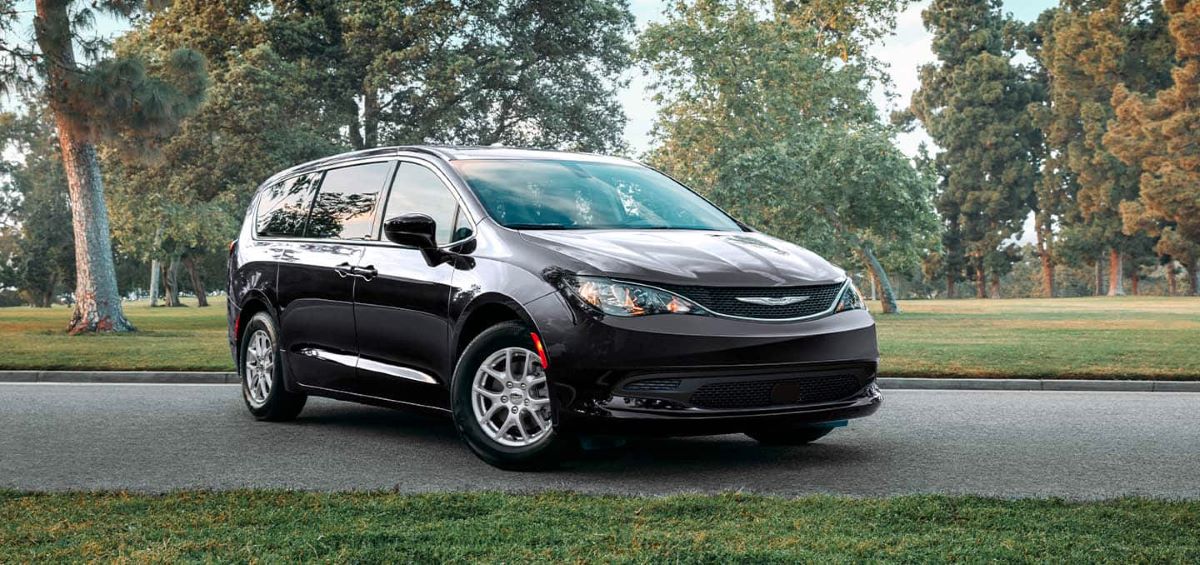
While the minivan segment as a whole has seen a decline in popularity, the Chrysler Pacifica remains a strong performer, with over 100,000 units sold in 2024.
During the calendar year, the Voyager sold 12,033 units, though this figure can be somewhat misleading, as the model was not available for the entire year.
Even with the adjusted timeline, the sales numbers for the fourth quarter don’t paint a much brighter picture: The Pacifica sold 25,737 units in Q4, while the Voyager only managed to move 1,266 units.
Audi A3
While the Audi A3 is one of the brand’s most successful models in Europe, it has struggled to gain traction in the American market. As of the end of 2024, dealerships are holding a 468-day supply of the vehicle.
The latest generation of the A3 sedan debuted in the U.S. for the 2022 model year, positioned as one of Audi’s two entry-level models, alongside the Q3 crossover.
In 2024, Audi sold over 20,000 units of the Q3, but the A3 and S3 combined sold fewer than 8,500 units.A 468-day supply is exceptionally high, though not without precedent.
In December 2023, the much-criticized Dodge Hornet reached a peak of 517 days’ worth of supply, although its inventory has since decreased to the point where it no longer ranks among the top ten worst models for unsold stock.
Nonetheless, another Dodge vehicle has now taken its place. If you want a petrol Audi A3 Sportback, the best choice is the 148bhp 1.5-litre 35 TFSI, which officially manages 0-62mph in 8.4 seconds.
It’s a highly flexible engine that feels lively and pulls strongly from low revs. We’ve yet to try the entry-level 1.5-litre 30 TFSI, but we suspect its 114bhp could feel underwhelming in a premium family hatchback like this.
The 148bhp 2.0-litre 35 TDI diesel has more torque (pulling power) and gets from 0-62mph quicker, taking 8.3 seconds. It’s strong low down in the rev range and that’s great for overtaking on a motorway – but we’d still recommend the 35 TFSI for cost reasons.
Officially, it can travel 88 miles on electric power alone, reducing your fuel and BIK tax bills in the process. On top of that, it’s pretty sprightly, with its total power output of 201bhp aiding a 0-62mph time of 7.4 seconds.
The A3 in Sport trim has smaller wheels and softer suspension than versions higher up the range, giving you the most forgiving and comfortable ride.
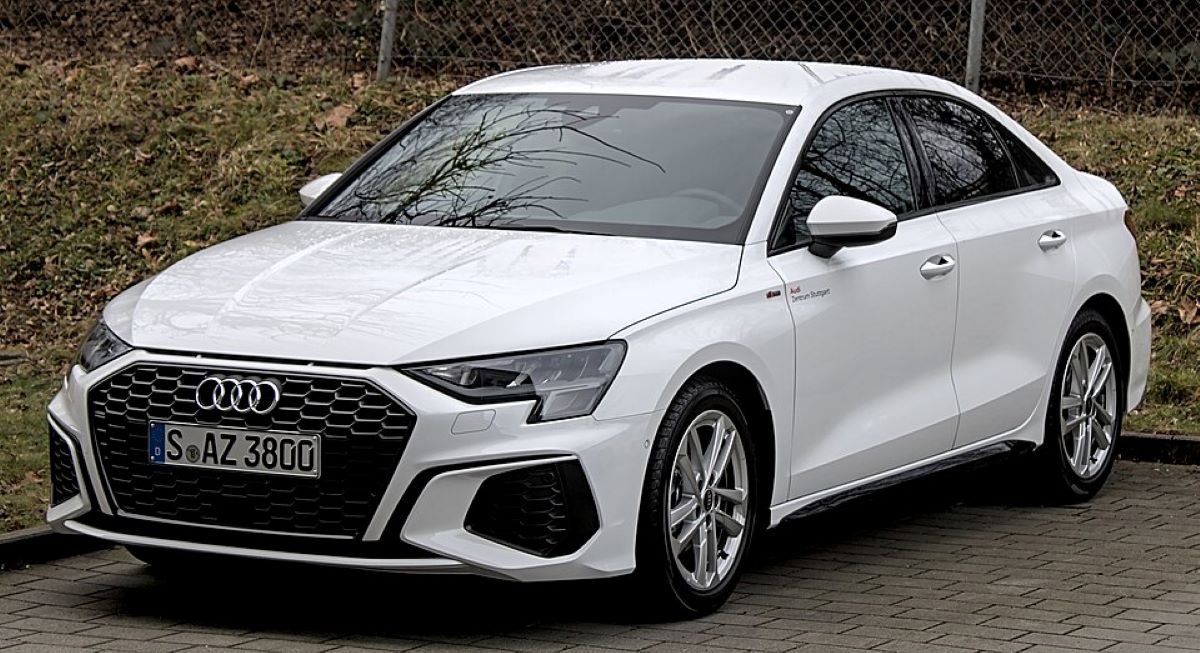
The Mercedes A-Class is even more cushioning over potholes but can become bouncier at times (over a series of bumps on an undulating B-road, for example).
On S line trim or higher, the A3 has a stiffer suspension set-up and bigger wheels (18in on S line and 19in on Black Edition) but remains impressively cushioning most of the time.
Indeed, S line is slightly suppler than the equivalent BMW 1 Series M Sport, and when you do hit rough stuff, the A3 recovers its composure quickly, with little bobbing or bucking afterwards.
The A3’s handling is predictable, secure and engaging. That even goes for entry-level Sport versions, but is most evident on S line and Black Edition models with their stiffer sports suspension.
They grip the road really well, with a lovely balance that leaves the car utterly unflustered by quick changes of direction and mid-corner imperfections. It certainly makes the A3 sportier to drive than the A-Class. In fact, among family cars only the Ford Focus is more fun.
The A3’s steering is reassuringly weighted and responsive. If you like really quick-feeling steering, you might prefer the 1 Series (which feels a little more alert to your inputs).
The TFSIe plug-in hybrid (PHEV) carries some extra weight, mainly from the battery pack, so it’s not quite as agile as other versions. That said, it’s still among the best-handling PHEVs on sale.
Dodge Charger
The electric Dodge Charger has the largest unsold inventory based on 45-day sales data, with an astonishing 1,755-day supply as of the end of 2024, according to CarEdge.
It’s important to note that deliveries of the electric Charger have only just begun, meaning the confirmed sales over the past 45 days the basis for the day supply figure might not accurately reflect the overall demand for the vehicle.
Nevertheless, having so many unsold cars sitting at dealerships is not a positive sign for Dodge, and it highlights a significant mismatch between the company’s sales forecasts and actual consumer demand.
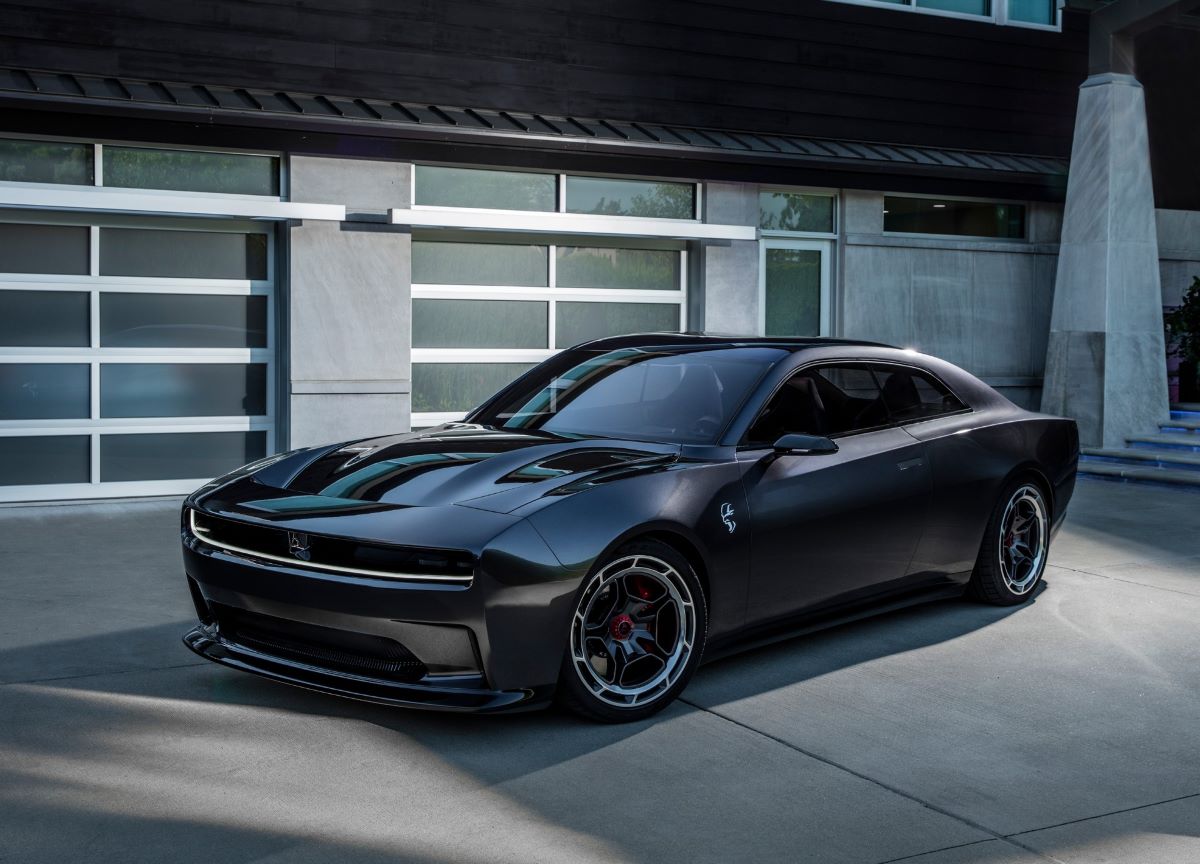
This situation also sheds light on why reports have surfaced suggesting that Dodge is accelerating the return of its six-cylinder Charger to production much sooner than originally planned.
It’s also noteworthy that the Charger Daytona is the only EV on this list. Despite some media outlets attempting to claim otherwise, EV sales as a whole continue to grow at a healthy pace in the U.S.
However, the electric Dodge Charger clearly isn’t connecting with buyers in the same way that other EV models have. If inventory levels remain high in the coming months, Dodge could face a serious challenge.

